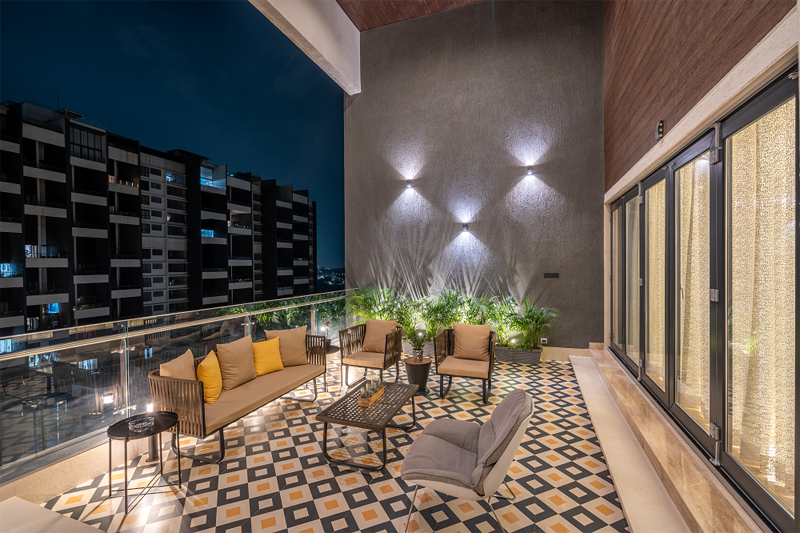Want create site? Find Free WordPress Themes and plugins.
Q. Who and What inspired you to take up this profession?
Coming from a service background where my father was an engineer and mother a homemaker. My father was the one who encouraged me to peruse architecture, as he could foresee those capabilities in me and made me realize my calling. While thoroughly enjoying my design school days I was so fascinated by the profession that even I picked up a part-time job with my professor in their office with an urge to learn more.
Q. Do you think professional education helps? How has it helped you?
As an alumnus of Dr. B.N College of Architecture, I run my own company along with an amazing team, Tejomaya – which means, “full of light” the essence of which is reflected in my personal and professional life. Professional education is increasingly being called upon to play a significant role in the administration of new programs within continuing and new structures. Taking a relevant course or professional education always helps and can inspire you to try things you haven’t tried before.

Q. Which was your first project? Where? Share some of your memorable experiences?
The style is best defined as a ‘Classic Contemporary’ creating a non chalant and stylish dialogue. Her use of neutral tones in the furniture and adding colour with artwork, artefacts and soft furnishings brings in the distinctive point of view to create memorable and inspired spaces. With a marked understanding of antiques and artefacts, textiles and textures, fine art and bespoke design, scales and proportions gives a timeless and refined vision to every project she undertakes.
Q. According to you how has architecture and interior design as profession evolved over the years? What contributed to the changes?
In the past, interiors came with a standard design as a part of the construction. There wasn’t much that was done or expected until the industrial revolution. Over the years, of course, the profession of interior design has been evolving along with the development of society. The constant developments, the need for effective use of space, and functional design have contributed to this field and shaped it in the manner that it is today.
Q. What is your design style and what makes you unique amongst your new generation fellow competitors?
The Industry that we are in is highly competitive and creative. But I also feel that everyone here has the luxury to carve a space for themselves, as it’s a very individualistic approach. I believe, by understanding a client’s requirement and personality helps in achieving 50% of the work. Be it a home or a commercial space, always illuminating their vibe adds a touch of uniqueness to the project.
Q. What is your opinion about awards?
Work is worship and the field that I work in involves a lot of creativity, analytics, hard work, and the right approach apart from expertise to create & design space.
The first award or rather reward to me is the client’s feedback which is a sense of accomplishment. Awards bestowed upon me amongst the industry are when I get an opportunity to understand myself better and feel acknowledged within the fraternity.
Q. India in itself has rich influential heritage of architecture and interior design such as Temple, Dravidian, Kalinga , and Mugal! Is it the time that compelled the changes or any other factors that contributed? Your views
Need is the mother of all invention with the growing population and concentration of development in limited pockets the Architecture style have transformed to meet the changing world . Vertical development is the need of the hour along with automation and technology the architecture form have shaped keeping the evolving need as society progresses. Designs are not only aesthetically appealing but functionally futuristic keeping the growing concerns of environment. Being self-sustaining is the mantra in today’s world .
Q. In the modern times we see lot of our structures influenced by Colonial, Western Gothetic style of architecture? How do you see the architecture and interior design in present times and in coming future?
Our built environment is the most tangible record of our existence, our lifestyle and our heritage. Indian architecture has stood the test of time for centuries, but with globalization and modernism, it is slowly and steadily losing its identity. Embracing modern architecture is not an anomaly, but more like a gradual disconnection from our roots and identity. Modernity is always welcome if it comes with better solutions to deal with climate, habitation, space, and urbanization.
Q. What is missing in Indian Architecture? Which new architectural practices will be game changers in the near future?
Over the last two decades, the construction industry has been subject to dramatic changes, paving the way for a future in which traditional spatial concepts are longer valid. Now, compost is being used for building materials, crowdfunding and collaborative design have become increasingly popular approaches to architectural projects, there is a focus on the importance of green infrastructure and energy efficiency, and the line between private and public space is becoming increasingly blurred.
We actually found the changes quite impressive. It is not a secret that technology has accelerated at an incredible pace! Architecture is not an exception.
VR & Immersive Architecture
“VR is a huge leap forward for projects in the conceptual stage. Clients can actually see the proposed designs as they are intended. It’s powerful”
Virtual reality technology has seen rapid developments in recent years and this is most apparent in the architectural, engineering and construction industry.
Although Big Data has a lot of buzz around it, I believe that in many ways it is still a relatively new and unexplored concept. However, its potential for human analysis is already obvious.
Did you find apk for android? You can find new Free Android Games and apps.


